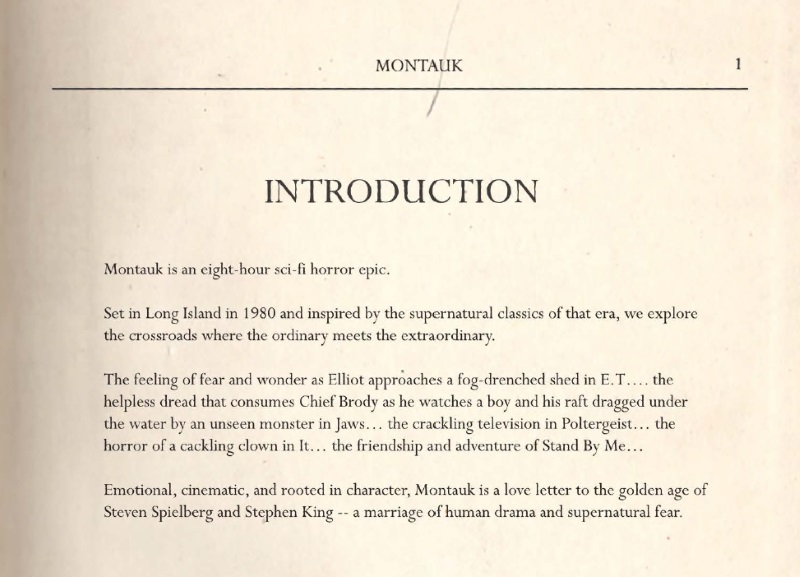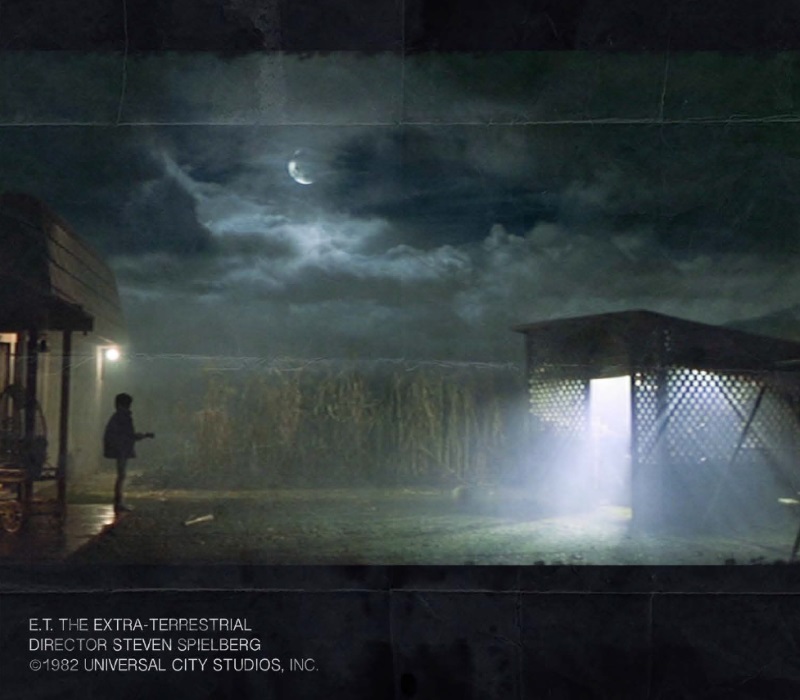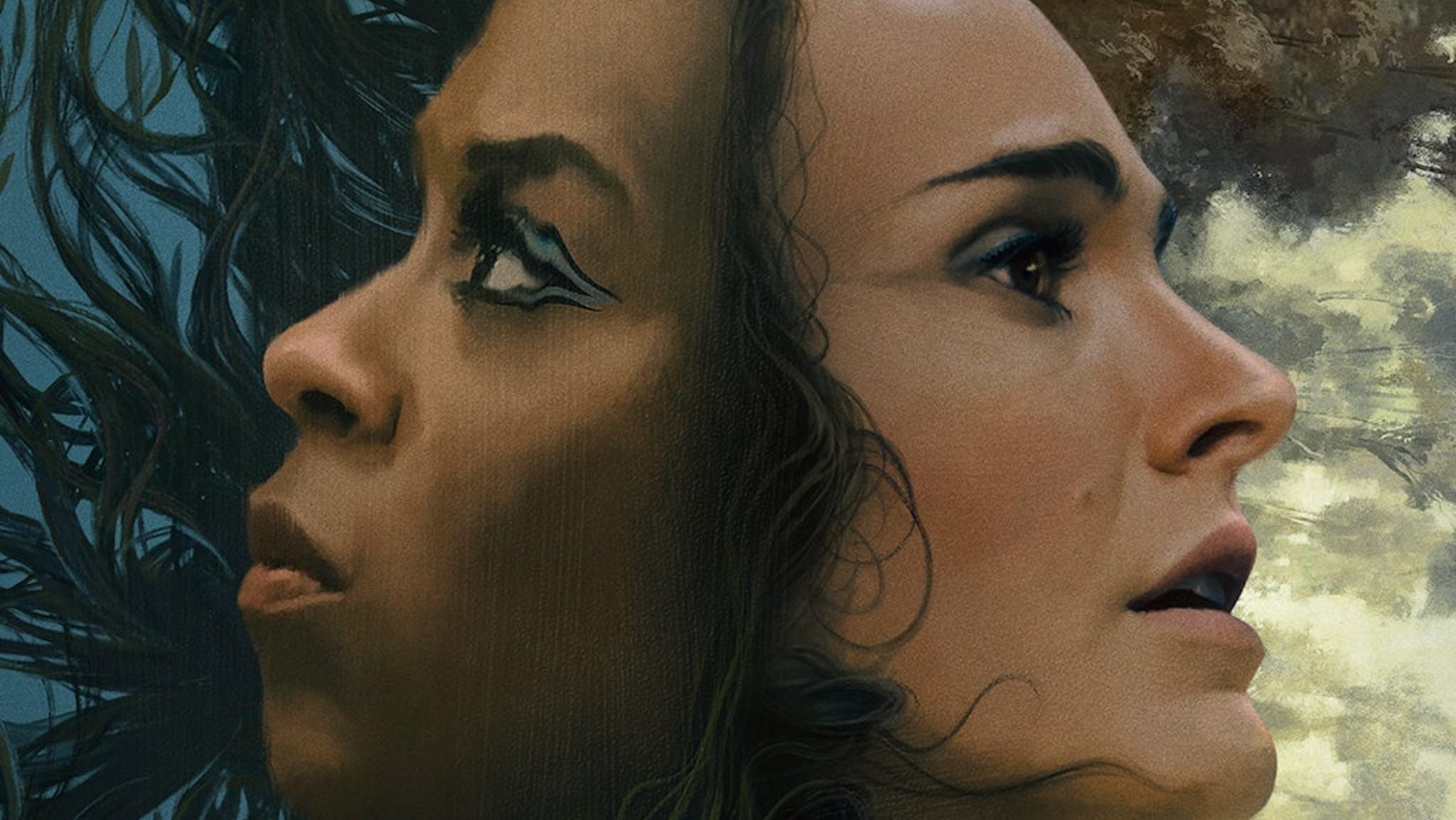How to Sell Your TV Series the Stranger Things Way

The title itself has become the perfect pun — Stranger Things.
Stranger things certainly happened when the unknown Duffer brothers sold their TV show to Netflix after a heartbreaking period of rejection where the series was denied more than twenty times by other networks. Nobody thought that a show about three boys trying to solve a mystery would be a hit.
Have you written the next big hit? Enter the ScreenCraft TV Pilot Competition here.

Matt and Ross Duffer started making movies in the third grade after their parents bought them a Hi8 video camera.
“We just started filming anything and everything,” Matt Duffer told Entertainment Weekly. “And then, each summer, we made a feature-length movie. The first one was kind of unwatchable, but progressively, they got a little better and better.”
They later attended Chapman University together and began to collaborate on many short films — one of which won Best Short at Dallas’ Deep Ellum Film Festival in 2005.
Their senior thesis was a short film entitled Eater — based on the Peter Crowther story about a cop working a night shift while a cannibal inmate is on the loose. They had been previously named Marion Knott Scholars and were awarded with the chance of developing this film under the guidance of The Hunt for Red October producer Mace Neufeld.
After graduating, the brothers wrote the feature Hidden, a horror-thriller about a family taking refuge in a bomb shelter away from a deadly viral outbreak. The script later prompted a bidding war in Hollywood in 2011 with Warner Brothers eventually winning the rights. The film never made it to theaters.
“Looking back on it, for us, it was using that low point as an advantage,” Ross explained. “I don’t think Stranger Things would exist without it, because it was us being disillusioned with movies, the things we fell in love with, and then seeing this other opening in television that, if we really want to tell the kind of stories we want to tell, maybe we were just looking in the wrong place.”
Catching the attention of none other than M. Night Shayamalan, the filmmaker gave the brothers writing and producing jobs on what would become the first season hit Wayward Pines. They went on to write season 1 episodes The Truth, Choices, A Reckoning, and Cycle.
“That became our training ground, and M. Night Shyamalan became a great mentor to us,” Ross told Rolling Stone. “By the time we came out of that show, we were like, ‘OK, we know how to put together a show.’ And that’s when we wrote Stranger Things.”
The rest is history.
What is even more interesting is how the brothers sold the show.
The History of the Show Bible
The show bible has evolved. In the beginning, writer rooms of shows that had been on the air for multiple seasons would create show bibles specifically for the purpose of informing incoming new writers. Because the shows had multiple seasons, writers would come and go. In order to ensure that the nature of the show wouldn't change as those new writers came in, the show bible was created as a reference tool.
Now all incoming directors, writers, and talent could refer to these bibles, which detailed episode stories already written and produced, character arcs, story arcs, etc. The practice was less of a product of the show runner and more a product of the writing assistants in the writers room.
As television grew, the use of show bibles evolved. And then things began to change after the first decade of the 21st century.
The Show Bible As a Selling Tool
Producers and writers eventually began to use the template of a show bible as a selling tool to networks. In the risk adverse times post-WGA strike and economic disaster of 2007-2008, the usage of show bibles that accompany spec pilot scripts began to take fashion.
It was no longer just about a hot spec pilot. That pilot had to be the introduction of the story while a connected show bible showcased the long term potential. It was now a selling tool, as opposed to a back end reference for an already produced series.
Stranger Things — Formerly Known as Montauk
The Duffer brothers had a love for all things Eighties — John Carpenter, Stephen King, Steven Spielberg, and beyond. When they began to develop the pilot, they also conceived a somewhat cryptic show bible that would display the themes, homages, and inspirations behind what they were trying to sell.
"When we were selling it, we made a fake Stephen King paperback cover for the show. We actually used the Firestarter paperback and put our title and an image of a fallen bike on top of it, so when we were trying to come up with titles, we would type them out onto this paperback cover and it would help us. And Stranger Things sort of sounds like Needful Things—it sounded like it could have been a Stephen King book from the ‘80s," Matt told The Daily Beast.

Introduction
The beginning of the Stranger Things show bible — following the enticing throwback cover — continued to follow the stylistic fashion of old Stephen King paperbacks.

Notice that they didn't utilize a logline or story synopsis of the pilot script. What you have to remember is that the show bible is there to compliment the spec pilot — with the thought that the producer or development executive liked the pilot enough to warrant a look at the show bible that the writer(s) wisely included.
The introduction within the Stranger Things show bible instead focuses on the themes and style of what the show could be.
They use comparisons to iconic and successful films and literary references to set the stage as far as what the reader should be visualizing when considering the project.
The brothers even included reference photos of those inspirations to solidify those pitched visuals and concepts.

The Mythos
Stranger Things has specific story mythos embedded within. One of those central story arcs centers on the Montauk Project Conspiracy. This story element is the backbone of the whole series. What is the conspiracy? Who are the people behind it? What did they unleash?

Screenwriters could learn from this move by understanding that the show bible is there to offer not detailed description, but broad strokes of story, characters, plots, etc. Since the Montauk Project is so vital to the eventual stories that the characters must deal with, the brothers wisely included it right after the introduction.
This section is essentially the conflict of the story.
So if writers are developing their own show bible, it may be smart to find that central conflict backbone and pitch it early so that the development executives and producers can know and understand what the conflict of the whole series is.
Lost would be the island and the Dharma Initiative. Breaking Bad would be the drug operation and everything it touches. The Last Man on Earth would be the post-apocalyptic world after a deadly virus has killed most of the world's population.
In short, presenting the core conflict early engages the reader. They want to know how this conflict is going to play out.
And to sell the visual of that project, the brothers included another image that offers the reader a frame of visual reference.

The Story
The next page of the bible contains the story. Now, this isn't just a recap of the pilot script in synopsis or treatment form. Instead, it builds from the pilot and communicates story direction that will be taken.

Character names are in caps the first time they are mentioned, much like in feature scripts and pilots. The time period is set and the atmosphere is drawn out. The conflict is being built up without going into detail.
The Duffer brothers are bombarding the reader with excellent themes and imagery. This type of writing is all about style and atmosphere. Sure, there are story elements involved, but they are partnered with a feeling of being within a living and breathing production already.
And this is done in just one page followed by yet another reference image.

Structure
The next section covers the structure of the whole series. Stranger Things in particular was an eight episode limited series — but what is interesting is that in the spirit of homaging Eighties movies, the series is pitched as structured under a general three act story structure normally followed in features.

Once again, this only covers one page of the bible. Like the story section and introduction before it, you want to make sure that these descriptions and breakdowns are kept to a minimal number of pages. Anything beyond one page is a stretch. You can quickly lose the interest of the reader. Remember — broad strokes.
Tone and Style
These elements are crucial to the selling of a series. Once again, you want to communicate the look and feel of the show, beyond the story and concept elements.

From the visuals, to the period setting, and even to the soundtrack. The Duffer brothers gave networks an added feel of the series that they opened up with in the introduction. It's quick, simple, and full of references that the reader can relate with and envision.

Genre
The next section of this type of show bible includes the genre. Stranger Things focused on horror. Because the series was highly inspired by Stephen King novels, there's no question as to why this genre was featured in the bible. There are elements of science fiction as well, but the overall feel of the series pegged the core genre as horror. So the brothers featured it briefly.

Within this genre section, the idea of subgenres is introduced as well. They state that the horror is supernatural, but rooted in science. They also feature a different kind of horror — the human kind.
What they are establishing is the scope of the genre. And while they do that, they are also informing the possible buyers of the type of production that will be warranted. They point to specific special effects needs and dictate that it's not all supernatural horror — which costs money — but also the horrors of human characters and the darkness of the human condition as they struggle through the conflicts thrown at them.
After reading that section, the reader has a perfect idea of the genre that they could possibly be buying.

Characters
The characters are especially crucial to a television series. With features, you're only spending two hours with those characters. With a show, you're looking at potentially multiple seasons — hours and hours spent watching the same characters (at least those who survive) dealing with conflicts. Thus, the work on character development is even more difficult.

Those four characters are the central protagonists and the Duffer brothers simplify their descriptions — which offer character types, traits, and physical looks — with the perfect reference visual.
Check out ScreenCraft's 7 Effective Ways to Give Your Characters Unique Voices for more on the importance of character types and traits!

While that visual aide isn't a perfect reflection of the characters presented, it is a perfect frame of reference to start from.

While the kids are great protagonists, you always want to shake those characters up. This applies to any story. Who is the X factor that adds more depth and draw to the story?
The Duffers said it best when they wrote, "If Mike is the Elliot of our show, Eleven is our E.T." Imagine Stranger Things without that character — difficult to, isn't it?


In the case of Stranger Things, what Eighties-inspired series would forget teenagers?
In the context of your show bible, you also have the chance of adding additional characters to add to the stories of the protagonists. This adds just a couple of more elements to the mix to give the show more story angles to work with.


When you are developing a show, you need to look for any and every possible way to broaden the audience-base. That's what networks are looking for. The more demographics you bring in, the more appeal your series will have.
So with the kids and teenagers as central characters, Stranger Things also needed some eyes for the adults in the audience. Now, yes, the show itself isn't primarily for kids and teenagers. It is more geared towards adults. But with the initial main draw of the series centered on nostalgia of the Eighties, those that weren't as engaged by the idea of being kids in that era again had adult characters to follow as well.

Franchise Potential
This final section is your final pitch. This is where you tell the powers that be where this story could go beyond the first season. Networks aren't primarily interested in one-offs. They want content that will keep audiences coming — season after season. And this section exists for the sole purpose of you to tell them how and why the series could continue on.

It's interesting to see this closing statement in print after the success of the first season and the announcement of at least two additional seasons at the time of this writing. The second season didn't jump ten years like the show bible said. Instead, it is still set the in Eighties. The lesson to be learned is that you need to know the pure draw of your series. For Stranger Things, many people watched it because of the nostalgia they felt in the homages to movies and cultural references of their childhood. Others were engaged by the retro aspect of it — with many born well after the Eighties.
The Duffer brothers will tell you that the response to the series was a shock. Even they didn't know the huge draw of the show. They just wanted to write a strong series that was a love letter to what they loved from that time period.
So be sure to take your time with the conceptualization of the franchise potential of your series. Get to the core of it and then sell that in the closing statement.

Note: The presentation of this Montauk Series Bible is meant to be used for educational purposes only.
The Stranger Things show bible was a mere 23 pages long. There were no episode breakdowns — just overall act breakdowns for the first season. The mistakes that screenwriters make when developing bibles is the misconstrued belief that bibles should be this thick and dense book of information. They are mistaking the new evolution of the bible with the old timer's show bible that was used as a tool for incoming writers of already established shows. Such bibles still exist, to be sure. But when it comes to using a bible as a marketing tool to sell your pilot, this is the direction to follow.
You offer an introduction, feature the core conflict of the series that the characters will be going up against, offer a general broad stroke of the story, break down the structure of that first season, display the tone and style to set the atmosphere for the potential buyers, feature the main characters that your series will follow, and then wrap things up by telling them how and why the pilot script that they just read wasn't a mere flash in the pan.
That's how you sell a series. And yes, selling television pilots on spec is difficult and has its challenges — but stranger things have happened.
Ken Miyamoto has worked in the film industry for nearly two decades, most notably as a studio liaison for Sony Studios and then as a script reader and story analyst for Sony Pictures.
He has many studio meetings under his belt as a produced screenwriter, meeting with the likes of Sony, Dreamworks, Universal, Disney, Warner Brothers, as well as many production and management companies. He has had a previous development deal with Lionsgate, as well as multiple writing assignments, including the produced miniseries Blackout, starring Anne Heche, Sean Patrick Flanery, Billy Zane, James Brolin, Haylie Duff, Brian Bloom, Eric La Salle, and Bruce Boxleitner, the feature thriller Hunter’s Creed, and many produced Lifetime thrillers. Follow Ken on Twitter @KenMovies
For all the latest ScreenCraft news and updates, follow us on Twitter and Facebook!
Tags
Get Our Screenwriting Newsletter!
Get weekly writing inspiration delivered to your inbox - including industry news, popular articles, and more!



























